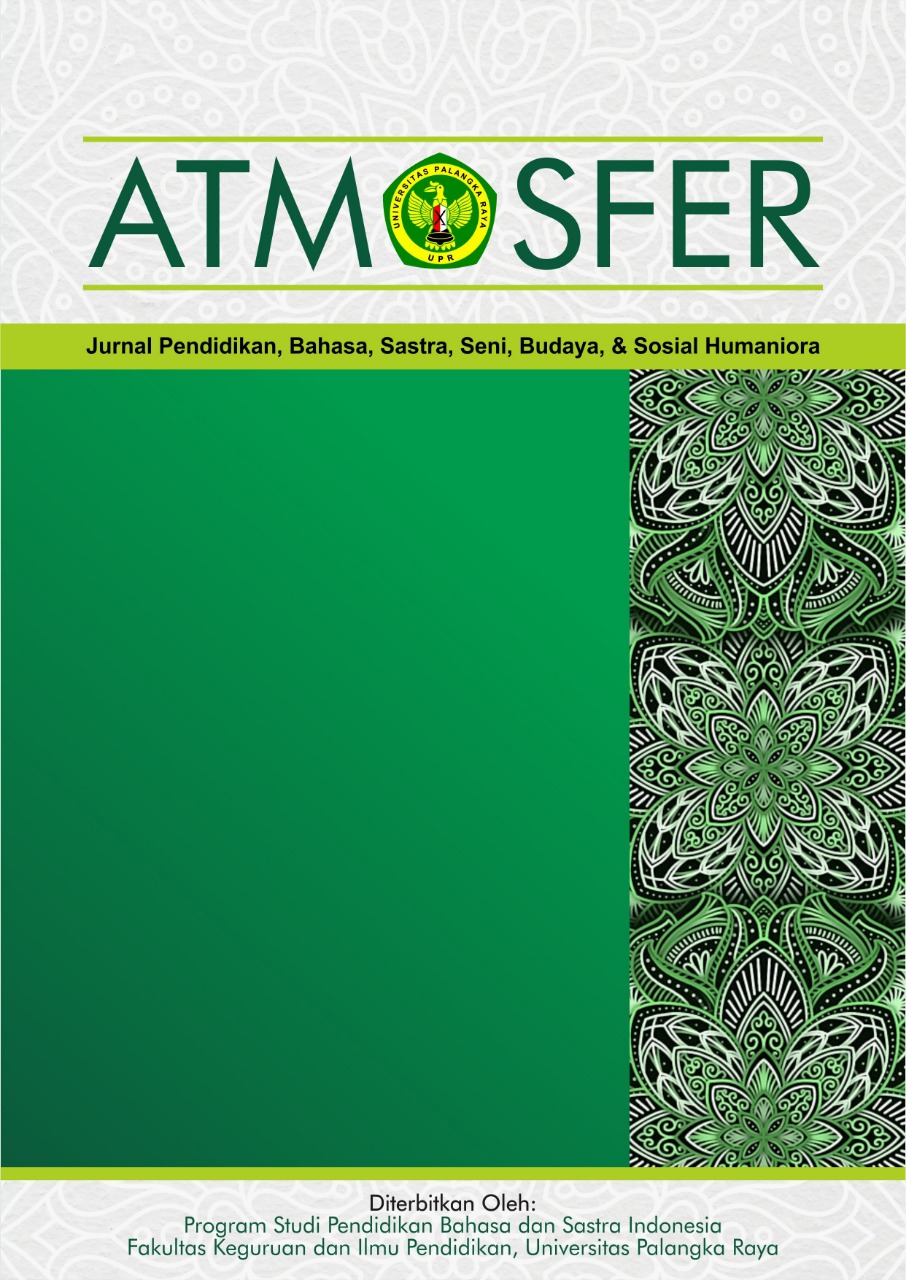suarairama
pestanada
beritabandar
rumahjurnal
podiumnews
dailyinfo
wikiberita
zonamusiktop
musicpromote
bengkelpintar
liburanyuk
jelajahhijau
carimobilindonesia
jalanjalan-indonesia
otomotifmotorindo
ngobrol
olahraga
mabar
dapurkuliner
radarbandung
indosiar
radarjawa
medianews
infowarkop
kalbarnews
ketapangnews
beritabumi
kabarsantai
outfit
faktagosip
beritagram
lagupopuler
seputardigital
updatecepat
marihidupsehat
baliutama
hotviralnews
cctvjalanan
beritajalan
beritapembangunan
pontianaknews
monitorberita
koronovirus
museros
iklanjualbeli
festajunina
capoeiravadiacao
georgegordonfirstnation
1reservoir
revisednews
Menentukan Kartu Baccarat Memahami Pola Baru Sugar Rush Dengan Aturan RTP dan Langkah Tepat
Mengenali Pola Aztec Gems Membuat Casino Baccarat Berubah Seperti Eksperimen Sains
Pelajari Mengelola Pola Mahjong Ways 3 Agar Baccarat Tidak Lagi Membingungkan Pemain Baru
Sugar Rush, Mega Sicbo dan Baccarat: Menemukan Pola dan RTP Misterius Jadi Kolaborasi yang Strategis
Cara Mengikuti RTP Bonanza Memaksimalkan Hasil Setiap Pola Baccarat Cepat dan Akurat
Taktik Mengombinasikan Mahjong Wins 3 Dengan Model Prediktif Untuk Membaca Ritme Baccarat
Cara Mengadaptasi Kebiasaan RTP Sugar Rush Dari Ekologi Digital Sistem Pembelajaran Kartu Baccarat
Membaca Ruang Mega Sicbo Pola Acak Membentuk Kultur Kompetisi Baccarat Generasi Baru
Menentukan Fokus Pada RTP Bonanza Membangun Identitas Pola Strategis Baccarat Modern
Pelajari Pergerakan Pola Aztec Gems Mengubah Cepat Paradigma Pemain Terhadap Baccarat
Teknik Mengemas Sugar Rush Menjadi Framework Efisiensi Dalam Permainan Casino Baccarat
Teknik Menyusun Aztec Gems Sebagai Basis Evaluasi Pengambilan Keputusan Bermain Baccarat
Cara Menentukan Parameter Mahjong Wins 3 Merubah Titik Ukur Stabilitas Ritme Baccarat
Menentukan Skala Prioritas Mega Sicbo Untuk Menyusun Roadmap Pembelajaran Kartu Baccarat
Mengenali Faktor Sosial RTP Bonanza yang Memengaruhi Preferensi Pola Taktik Baccarat
Menentukan Gelombang Sugar Rush Merubah Kartu Baccarat Online Menjadi Kristal Hidup
Mengatur Arah Pola Baru Kosmik RTP Bonanza Agar Baccarat Melewati Orbit Digital Pgsoft
Pelajari Kartu Hologram Mega Sicbo Menembus Jalur Misterius Setiap Lapisan Baccarat
Teknik Menyusun Fragmen Aztec Gems Pada Puzzle Dimensi Casino Baccarat Baru
Cara Membaca RTP Jejak Cahaya Mahjong Wins 3 Dalam Labirin Digital Meja Baccarat
Mengenali Pola Asimetris Mahjong Ways 3 Yang Menyelinap Kecepatan Baccarat Online
Mengelola Pola RTP Bonanza Untuk Menyusun Evolusi Perilaku Pemain Baccarat Modern
Membaca Struktur Geologi Pola Sugar Rush Sebagai Penanda Pergeseran Kartu Baccarat
Cara Menggunakan RTP Aztec Gems Sebagai Pemetaan Akustik Dalam Interpretasi Baccarat
Teknik Mega Sicbo Memadatkan Energi Baccarat Menjadi Bahan Baku Fraktal Dunia Digital
Taktik Membangun Pola RTP Bonanza Untuk Mengarahkan Arus Baccarat ke Titik Maksimal
Pelajari Dinamika Sugar Rush Ketika RTP Membentuk Pola Peta Gerak Horizontal Kartu Baccarat
Menentukan Rangkaian Pola Mega Sicbo Sebagai Stabilizer Perubahan Irama Baccarat Online
Pelajari Metode RTP Aztec Gems Menghasilkan Distorsi Unik Pada Flow Casino Baccarat
Mengelola Pola Matrix Mahjong Ways 3 Menyusun Struktur Keselarasan Kartu Baccarat Dunia Digital
Mengenali Efek Domino Aztec Gems Yang Diam-diam Mengubah Arah Jalan Baccarat
Pelajari Struktur Fraktal Sugar Rush Yang Dapat Menguasai Perubahan Dalam Game Baccarat
Teknik Menarik Magnet Mega Sicbo Untuk Membelokkan Arah Bacaan Baccarat Online
Menentukan Orbit Bonanza Membentuk RTP dan Arah Pola Casino Baccarat Masa Depan
Mengelola Fitur Mahjong Wins 3 Untuk Mengaktifkan Naluri Pemain Baccarat yang Tersembunyi
Cara Menyulap Aztec Gems dan Baccarat Menjadi Ritual Kemenangan Digital Pagi, Siang dan Malam
Mengelola Pola Mahjong Ways 3 Menggunakan RTP Baccarat Untuk Memunculkan Jalur Kemenangan
Mengenali Aura Game Mega Sicbo Pada Pondasi Baccarat Casino Membentuk Jalur RTP Baru
Pelajari Irama Mega Sicbo Membaca Pola Baccarat yang Tersembunyi Dalam Dimensi Digital
Cara Mengelola Baccarat Melalui RTP Bonanza dan Pola Angka Menjadi Energi Rahasia
Cara Kerja Baccarat Online Menyusun Pola Bonanza Sebagai Bahasa Baru Menuju Kemenangan
Fakta Menarik Mega Sicbo Menulis Sejarah Pola Baru Dalam Dunia Baccarat Digital
Mahjong Wins 3 Tentang RTP dan Pola Baccarat Sebuah Dialog Membuka Waktu Keberuntungan
Mengenali Pola Buatan Sugar Rush Membuka Tabir RTP yang Terpendam Dalam Strategi Baccarat
Aztec Gems Menentukan Dinamika Baccarat dan Pgsoft Tentang Ketepatan Pola dan Keseimbangan RTP Digital
Fenomena Baccarat Berbisik ke Bonanza, RTP Menari Sambil Melempar Pola ke Dimensi Digital
Mengenali Mega Sicbo Mengguncang Dunia, Pola Baccarat Meluncur Bersamaan RTP Berubah Jadi Aura
Cara Sugar Rush Meningkatkan Popularitas RTP dan Pola Memperkuat Kartu Baccarat
Aztec Gems: Cara Menjaga Keseimbangan Pola Baccarat Hingga RTP Menyala Tanpa Alasan
Mahjong Wins 3: Trik Memanggil Black Scatter Menjawab Kesunyian Game Baccarat Digital
Mengatur Disiplin Menggunakan Pola Baccarat Menjadi Navigator Antara Sugar Rush dan Dunia Digital
Cara Penafsiran RTP Mahjong Wins 3 Mengurai Pola Baru Dimensi Baccarat Online
Mega Sicbo, Baccarat, dan Frekuensi RTP: Tiga Pola Elemen yang Menentukan Arah Kemenangan
Teknik Bonanza dan Aliran Kartu Baccarat Memaknai Pola RTP di Tengah Arus Digital Semakin Maju
Aztec Gems Menulis Ulang Pola dan Hukum Penggunaan RTP yang Sering Dipakai Pemain Baccarat
Meraup Untung Ratusan Juta Pada Malam Pertama Mencoba Mahjong, Cek Sekarang Pola Yang Digunakan Sinta Malam Ini
Taktik Dan Pola Pragmatic Pada Mahjong 3 Dengan Analisis Paling Akurat Di RTP Terbaru Malam Ini
Tren Paling Banyak Diminati Anak Muda Yaitu Baccarat 2025 Dengan Metode Speed Play Yang Memudahkan Mecapai Kemenangan
Bapak Bapak Pejaten Sedang Heboh Dengan Hadirnya RTP Suhubet Membawakan Pola Mahjong 3 Fusion Terbaru
Perubahan Algoritma Pada Mahjong Yang Di Bocorkan Programmer SUHUBET: Cek Sekarang Pola RTP Terbaru 2025
Perkembangan Teknik Perputaran Mahjong Dengan Bermodalkan RTP SUHUBET Yang Sedang Hijau, Bocoran Dari Orang Dalam
Kronologi Perputaran Mahjong Yang Menghebohkan, Fakta RTP Suhubet Yang Membuat Banyak Pemain Maxwin
Perkembangan Teknologi Ai Membuat SUHUBET Dalam Membuat Pola RTP Mahjong Dengan Analisis Data Akurat Dan Selalu Membuahkan Hasil
Suara Dentuman Keras Dari Cafe Ternama, Ternyata Dari Perputaran Mahjong Menghasilkan Pengali Besar Di Suhubet
Telah Terbukti RTP Mahjong Di Suhubet Sudah Di Akui Sisi Oleh Pemain Dunia, Cek Sekarang Pola Perputaran Terbaru Dan Paling Top
Mahjong VS Gates of Olympus Pada RTP Terbaru Hasil Paling Baru Dari Analisis Data Menggunakan AI
Panduan Lengkap Strategi Cerdas Pada Mahjong Yang Membuahkan Hasil Maximal Menggunakan Pola RTP Terbaru
Literasi Pola Dari Panduan Terbaru Terhadap Update Mahjong Ways Agar Perputaran Tidak Berhenti
Pola Sinkronisasi Antara Wild Dan Scatter Mahjong Panduan Fusion Kreatif Pada RTP Yang Akurat
Sukirman Membagikan Pengalaman Seru Mendapatkan 410Juta Pada Mahjong Menggunakan Pola Bocoran RTP Suhubet
Pola Misterius Terbaru Gates of Olympus Bikin Kakek Petir Seolah Marah, Petir Emas Turun Tanpa Henti
Pola Baru Gates of Olympus Paling Bikin Kaget, Pemain Klaim Dapat Petir 100x Hanya Dalam Beberapa Menit
RTP Naik Menukik Tajam, Sweet Bonanza Tiba-Tiba Gacor Parah di Jam Tak Terduga
Pola Aneh Setelah Update RTP Gates of Olympus, Banyak Pemain Dapat Maxwin Tak Masuk Akal
Perbandingan Putaran Mahjong Dengan Gates Of Olympus Menghasilkan Perputaran Baccarat Akurat
Tahun Terbaru Meriahkan Mahjong Wins 3 Dengan Bocoran Analisis Data Terbesar Setiap Perputaran Yang Menghasilkan
Peforma Paling Baru Dengan Hadirnya Tampilan Digital 3D Pada Mahjong Yang Menggugah Euforia Permainan
Kreasi Karya Anak SMA Pada Gambaran Mega Sic Bo Dan Baccarat Pada Pentas Seni Yang Membawa Juara 1 Over All
Petani Jimbaran Mendapati Cara Gambaran Angka Yang Tepat Setelah 2x Putaran Sicbo Dari Ilmu Orang Dalam
Mahasiswa Teknik di Sugriwa Membagikan Cara Menata Pola Baccarat Yang ia Peroleh Dari Admin Suhubet
Cara Mengadaptasi Pola Pertemuan Wild Ke Sesi Harian Mahjong Pada Perputaran Baccarat Digital Paling Baru
Cara Terbaru Analisis Data Mahjong Bedah Taktik Perputaran Yang Sangat Efektif Dalam Pembaruan Terbaru
Menguasai Taktik Mahjong Tidak Sulit, Seni Dengan Pola Terbaru Yang Wajib Diketahui Pemain Baru Dan Lama
Perpaduan Antara Warna Emas Dan Merah Pada Mahjong Menghadirkan Eksperiment Mencari Pengali Yang Seru
Jangan Ketinggalan Cara Pemahaman Pola Rtp Terbaru Mahjong Dengan Adaptasi Putaran CandyLand Akurat
Strategi Rahasia Terlarang Akhirnya Terbongkar, Taktik Terbaru SUHUBET Dalam RTP Mahjong Paling Akurat
Teknik Mahasiswa Membuat Pola Terbaru Menggunakan RTP Suhubet Pada Mahjong Dengan Fusion Wild Dan Spin Turbo
Prediksi Pola SUHUBET Hari Ini Bocor Kombinasi Campuran Dragon Tiger dan Mahjong Jadi Trend Baru Pencari Cuan
Kisah Nyata Pemain SUHUBET Dari Modal 20 Ribu Jadi 20 Juta Berkat Pola Buyspin Tersembunyi
Data Rahasia RTP Bocor! Admin SUHUBET Ungkap Pola Campuran Mahjong dan Gates of Olympus yang Jarang Diketahui
Mahasiswa Lulusan Teknik Membuat Pola Perputaran Mahjong Pada SUHUBET Dengan Bermodalkan Analisa Data
Tren Terbaru Dengan Pendapatan Pengali X500 Pada Starlight Princess Menggunakan Pola Perputaran SUHUBET
Tren Perputaran Terbaru Menggunakan Algoritma Fusion Dari Mahjong Dan Juga Sugar Rush Pada RTP SUHUBET
Kemunculkan Scatter Mahjong Langka Pada Pola Putaran Menggunakan RTP Suhubet
Rahasia Terbongkar Cara Perputaran Mahjong Pada SUHUBET Untuk Para Pemain Pro dan Baru Dengan Penghasilkan 320Juta
Eksperimen Pola Olympus Terbaru di SUHUBET Teknik Buyspin Rahasia yang Bikin Zeus Turun Petir X500
Data Rahasia RTP Bocor Admin SUHUBET Ungkap Pola Campuran Mahjong dan Gates of Olympus yang Jarang Diketahui
Riset Pola Gila Malam Ini Kombinasi Scatter dan Fusion Wild di SUHUBET Jadi Mesin Cuan Tak Terbendung
RTP Meroket Tanpa Peringatan Teknik Perputaran Aneh di SUHUBET Bikin Akun Baru Langsung Cair
Zeus dan Kakek Merah Sepakat Bersamaan Bocoran RTP SUHUBET Bikin Dunia Slot Heboh Malam Ini
Pola Terbaru Bocoran Data Rahasia RTP Slotsensa Pada Permainan Mahjong Dengan Taktik Strategis
Strategi Perputaran Mahjong Menggali Pengali Dengan Taktik Cerdas di Slotsensa, RTP Mahjong Hasil Analisis Data Paling Akurat
Taktik Teori Spin Kreatif Dengan Metode RTP Slotsensa, Husman Mendapatkan Pencerahan Ilmu Perputaran Mahjong Terbaru
Taktik Terbaru Pola Kreatif Dari Fusion Wild Dan Scatter Pada Mahjong Di Slotsensa Menghasilkan RTP Tertinggi Tahun 2025
RTP Mahjong Dan Kakek Petir Sedang Berwarna Hijau, Simak Dan Pahami Pola Perputaran Slotsensa Agar Menghasilkan
Jangan Terlewatkan Pola RTP Kakek Petir Zeus di Buku303, Hasil Analisis Data Perputaran ProPlayer Olympus
Taktik Rahasia Paling Mudah Kuasai Pola Dan Strategi Jitu Dalam Permainan Kakek Petir di RTP Buku303
Teknik Bacarat Dari Pemain Pro Asal China Yang Jarang Diketahui, Pahami Pola Dan Analsisi Data Terbaru Yang di Klaim Anti Boncos
Strategi Pasti Unggul Pada Permainan Mahjong, Cek Sekarang Jangan Sampai Terlewat RTP Sedang Hijau Di BUKU303
Panduan Hasil Analisis Ritme Perputaran Mahjong, Pahami Sekarang Dan Raih Maxwin di BUKU303
Pengertian Mahjong Pada RTP BUKU303 Yang Sedang Berwarnai Hijau Membuahkan Keberhasilan Besar
Pemahaman RTP Buku303 Pada Pola Perputaran Sweet Bonanza Yang Mendapatkan Pecahan Tak Terhenti
Perputaran Kreatif Dengan Gabungan Wild Dan Scatter Bersamaan Pada RTP Mahjong Buku303
Penguasaan Pola Terbaru Mahjong Aktifasi Wild Dan Scatter Beruntun Pada Teknik RTP Buku303
Teknik Harian Cuan, RTP BUKU303 Dengan Pencatatan Pola Mahjong Paling Ampuh Dan Akurat Cek Sekarang Juga
Rahasia Terungkap Perputaran Kakek Petir Zeus, Ungkapan RTP Slotsensa Pada Dini Hari Memberikan Profit
Menjaga Modal Dengan Maximal, Taktik Perputaran Pada RTP Slotsensa Membuat Permainan Cuan Pada Baccarat Online
Bukan Fengsui Ataupun Hoki, RTP Mahjong Slotsensa Menggunakan Hasil Data Analisis Akurat Dalam Pembentukan Pola
Pentingnya Membaca Pola Mahjong Secara Manual, RTP Slotsensa Menghadirkan Persentase Tinggi Hasil Analisis Data Setiap Hari
Strategi Teruji Bocoran Dari Orang Dalam Slotsensa Dengan Hasil RTP Mahjong Yang Selalu Membuahkan Hasil Maxwin
RTP Mahjong Dan Kakek Petir Sedang Berwarna Hijau, Simak Dan Pahami Pola Perputaran Slotsensa Agar Menghasilkan
Panduan Belajar Membaca Pola RTP Mahjong Dengan Basis Ai di Slotsensa, Jangan Sampai Terlewatkan Peluang Terbaru
Menghindari Kesalahan Umum Dalam Membaca Pola Mahjong, Kuasai Dan Pahami RTP Slotsensa Sebelum Terlambat
Memahami Peran RTP Sebagai Peta Pola Perputaran Mahjong, Bantuan Terbaru Ai Pada Slotsensa Mempermudah Membaca RTP
Taktik Pada Baccarat Online Dengan Bocoran Dari Pemain Pro di Slotsensa, Hasil Analisis Permainan Baccarat Online Terbaru
Eksperimen Pola Zeus Berhasil Sukses! Petir Fusion Wild Gates of Olympus Muncul Beruntun dan Pecah Rekor Pengali
RTP Gates of Olympus Tiba-Tiba Hijau! Pola Aneh Ini Bikin Banyak Pemain Ngaku Gak Bisa Berhenti Spin
Zeus Turun Tangan Sendiri! Pola Baru Gates of Olympus SLOTSENSA Ini Bikin Kemenangan Datang Bertubi-tubi
Suara Petir Bikin Kaget! Pola Gates of Olympus SLOTSENSA Ini Bikin Semua Pemain Auto Cair Dalam Hitungan Detik
Member Senior Ungkap Pola Baru Gates of Olympus Yang Katanya Selalu Turun Scatter Di Putaran Ke-17
Awalnya Cuma Iseng Main Mahjong, Tapi Setelah Pakai Pola BUKU303 Ini, Akunnya Langsung Meledak Cuan!
Pemain Lama Kaget! Pola RTP Baru di BUKU303 Ini Ubah Peruntungan Jadi Deretan Pengali Berturut-turut
Dari Modal Receh Jadi Jutaan! Cerita Nyata Pemain yang Ikuti Pola Baru RTP Mahjong BUKU303
Eksperimen Pola RTP Mahjong BUKU303 yang Sempat Dirahasiakan Kini Bocor, Banyak Pemain Lupa Log Out!
Zeus Ngamuk Malam Ini! RTP Gates of Olympus Naik Drastis, Pemain BUKU303 Panen Petir Tanpa Ampun
Sesepuh Mahjong Membagikan Pola Taktik Terbaru Strategi Rahasia Dengan Peluang Cuan Paling Tinggi
Tutorial Terbaru Mahjong Panduan Paling Hoki Pada Tahun 2025 Dengan Pola Kreatif Masa Kini
Panduan Terbaru Sweet Bonanza X Mahjong Black Scatter Menggunakan Fusion Pola Terbaru Dari RTP Akurat
Redenominasi Pola Mahjong Dengan Total Perputaran 12X Saja Sudah Turun Scatter Tanpa Henti
Merespon Wild Dengan Cara Merangsang Scatter Mahjong Dengan Teknik Perputaran Terbaru Dengan RTP Ajaib Paling Akurat
Rumus Jitu Menghitung Perputaran Modal Mahjong Dengan Teknik Spin Ala Slotsensa Yang Di Klaim Pasti Menghasilkan
Kabar Baik Bagi Pengguna Mahjong, Saat Ini SUHUBET Sedang Memberikan Pola Terbaik Pada RTP Akurat
Hasil Analisis Wild Dan Scatter Dalam Pola Baru RTP Mahjong Suhubet Paling Akurat
Pembaharuan Pola Baru RTP Mahjong Suhubet Dengan Data Kemenangan Menghasilkan Perputaran Terbaik
Analisis Data Mahjong Dari Admin Suhubet, Bocoran Perputaran Yang Dibagikan Melalui RTP Akurat Terbaru
Cara Terbaik Tanpa Gagal Dalam Penggunakan RTP Mahjong Di Suhubet, Pola Bocoran Orang Dalam
Detik-detik Pola Fusion Wild SUHUBET Muncul, Banyak Pemain Mahjong Langsung Teriak Maxwin di Grup Telegram
Admin Bocorkan Pola Mahjong yang Dipakai Pemain Profesional, Cuma di SUHUBET yang Bisa Sebegitu Akuratnya
Rahasia Pola Tersembunyi Mahjong SUHUBET Terbongkar! Perputaran RTP Malam Ini Bikin Member Auto Cair
RTP Mahjong SUHUBET Naik Gila-Gilaan! Pola Baru Ini Katanya Bisa Pecah X500 Tanpa Scatter
Data Bocoran SUHUBET Malam Ini Bikin Heboh: Cek Sekarang Pola Mahjong Rahasia yang Cuma Dipakai Segelintir Member VIP
Taktik Perubahan Skala Perputaran Dari Turbo Menjadi Manual Pada Mahjong Hanya Bermodalkan RTP Akurat
Siklus Perputaran Pragmatic Play Dalam Peluang Menghitung Pola 30-40-15 Buktikan Segera
Update PGSOFT Terbaru Dengan Kolaborasi AI Pada Perputaran Yang Menghasilkan RTP Mahjong Paling Akurat
Analisa Paling Akurat Pada Taktik Perputaran Baccarat Digital Membawa Cara Cerdas Membaca Angka Kartu Yang Akan Muncul
Strategi Memancing Petir Dengan Konfigurasi Baccarat Digital Dalam Usaha Hengki Yang Tidak Mengecewakan Dengan Hasil 125 Juta
Peluang Terbaru Membuka Mega Wheel Pada Pragmatic Play Dengan RTP Jam Malam Yang Mempunyai Rating Tinggi
Pola Munculnya Crazy Time Secara Agresif Pada Evolution Dengan Menghadirkan Bocoran Data Jam Terbaru
Cara Kendalikan Modal Pada Perputaran Speed Roulette Agar Tidak Boncos di Awal, Teknik Terbaru Dari Herman Pemain Pro
Jangan Sampai Ketinggalan Datangnya Gabungan Sweet Bonanza Super Scatter Dan Gates of Olympus Super Scatter Pada RTP Akurat
Pedagang Asongan Memberikan Caranya Mengelola Modal Mahjong Pada Perputaran Pelan Tapi Pasti Menggunakan RTP SUHUBET
Grafis Yang Memukau Desainer SUHUBET Mengubah Mahjong Dengan Tampilan Baru Pada RTP Akuratnya
TakTik Terbaru Pembacaan Pola Sweet Bonanza Dengan Mengadopsi Dari Perputaran Baccarat Bocoran Data Dari SUHUBET
Pahami Terbaru Etika Menahan Emosi Dalam Perputaran Mahjong Dan Juga Baccarat Adalah Strategi Paling Jitu Di SUHUBET
Strategi Paling Mantap Dalam Mengelola Modal Agar Perputaran Mahjong Beserta SweetBonanza Tidak Terputus Pada RTP SUHUBET
Kesadaran Stop Loss Atau Yang Dikenal Taktik Anti Boncos Pada Permainan Mahjong Selalu Membuat Pemain Tidak Pernah Kalah Pada RTP Suhubet
Studi Pelajaran Terbaru Dengan Memilih Pola Anti Modal Turun Pada Mahjong Dan Juga Baccarat Yang Dibagikan Oleh Admin
Pemahaman Mendalam Pada Pola RTP Mahjong, Cara Terbaru Yang Diajarkan Admin SUHUBET Agar Selalu Menghasilkan
Pilihan Cerdas: 3 Pola RTP Mahjong Khusus Untuk Pagi-Siang-Malam Pada SUHUBET, Bocoran Data Rahasia
Trick Terbaru Mahjong Ways Dengan Terobosan Fusion Wild Agar Setiap Putaran Memberikan Pengalaman Seru Di Suhubet
Bermain Santai Dan Matikan Quick Spin Membuat Perputaran Modal Mahjong Menjadi Stabil Menggunakan Pola Ini
Baccarat dan Mega Sicbo: Pola RTP Tertinggi untuk Menang Besar di Game Online dengan Aztec Gems
Mega Sicbo dan Baccarat, Game Online yang Lagi Ngetren! Pola RTP Terbaik untuk Kemenangan Maksimal
Raih Cuan Setiap Hari di Mega Sicbo dan Baccarat! Pelajari Pola RTP di Game Online Mahjong
Mega Sicbo dan Baccarat Menghadirkan Pola RTP Terbaru! Temukan Cara Menang di Mahjong Wins 3
Ahli Ungkap Dinamika Poin Antara Mega Sicbo dan Baccarat Dalam Sistem RTP Terbaru PG Soft
Pola Pikir Bertumbuh Pemain Profesional Dalam Mengelola Tempo Mega Sicbo dan Baccarat
Disiplin dan Evaluasi Jadi Kunci Pemain Profesional Dalam Menjaga Pola Mega Sicbo dan Baccarat
Mega Sicbo Kini Jadi Laboratorium Pola Buatan Untuk Mengukur Kendali Dan Disiplin Pemain Baccarat
Pola Buatan Baru PG Soft Disebut Menjadi Penopang Konsistensi RTP Baccarat dan Mega Sicbo
Konsep Pola Bertumbuh Dalam Baccarat Kini Diadopsi Oleh Desain Sistem Mega Sicbo PG Soft
Mengenali Potensi Black Scatter Dalam Pola Baccarat dan Mega Sicbo Versi Update PG Soft
PG Soft Rilis Pembaruan yang Menyatukan Pola Mega Sicbo dan Baccarat Dalam Sistem Adaptif
Ahli Riset RTP Ungkap Kinerja Mega Sicbo dan Baccarat Meningkat Saat Pola Data Mengendur
Pola Mega Sicbo dan Baccarat Jadi Indikator Stabilitas RTP Dalam Sistem PG Soft Modern
Gate of Olympus Menggeser Arah Pola, Baccarat Menjawab Dengan Stabilitas RTP Tidak Terduga
Sugar Rush Menarik Nafas Dalam, RTP Baccarat Mengikuti Arus dan Membentuk Pola Baru yang Tak Terbaca
Cara Pola Bonanza Mengirim Sinyal Tersembunyi ke Meja Baccarat Saat RTP Sedang Bertransisi
Aztec Gems Mengguncang Lapisan Pola, Baccarat Merekam Setiap Getaran RTP Dengan Presisi Halus
Dunia Digital Tercengang Saat Pola Sugar Rush dan Baccarat Bertabrakan Menciptakan Lonjakan RTP Langka
Pola Mega Sicbo Meliuk Tidak Wajar, Baccarat Justru Menyerap Ritme dan Membentuk RTP Lebih Tenang
RTP Sugar Rush Menerobos Batas, Baccarat Mengatur Pola Seolah Menghindari Guncangan Sistem
Mahjong Wins 3 Memecah Diam, Baccarat Menyusun Pola RTP Seakan Mengikuti Nada Digital Baru
Pola Gate of Olympus Bergetar di Titik Emas, Baccarat Memantulkan RTP Layaknya Kristal Data
Baccarat Menemukan Pola Baru Setelah Aztec Gems Mengubah Hukum RTP di Balik Sistem PG Soft
Fenomena Digital: Pola Bonanza Mengendur, Baccarat Justru Meningkatkan Irama RTP Secara Perlahan
Pola Mega Sicbo Menciptakan Getaran Aneh, Baccarat Menyerapnya Menjadi Kestabilan RTP Rata-rata
Aktivitas Server PG Soft Naik, Baccarat Tiba-Tiba Menampilkan Pola Stabil yang Memicu Diskusi Komunitas
Pakar Pola Data Sebut Mega Sicbo dan Baccarat Kini Beresonansi Dalam Frekuensi Analitik yang Sama
Pakar Prediksi Sebut Pola Mahjong Wins 3 Mulai Tumpang-tindih Dengan Gerakan RTP Baccarat
Peneliti Ritme Digital Temukan Baccarat Mengikuti Pola “Gelombang Perilaku Pemain†Bukan Lagi RTP Sistem
Pola Mega Sicbo Berubah Setelah Lonjakan Cuaca Panas, Baccarat Justru Stabil Seperti Tidak Peduli Lingkungan
Pola Bonanza Melemah Setelah Aktivitas Internet Padat, Baccarat Menjelma Jadi Grafis RTP Paling Tenang Hari Itu
Observasi Tengah Malam: RTP Baccarat Bergerak Mengikuti Jam Biologis Pemain, Bukan Jam Server
Starlight Princess Membentuk Simbol Aneh Saat Notifikasi HP Pemain Ramai, Baccarat Mengimbangi Polanya Dengan Stabil
Mega Sicbo Terdeteksi Mengubah Pola Saat Banyak Pemain Menutup Tab Lain, RTP Baccarat Tidak Tersentuh Sama Sekali
Anomali Baru: Pola Mahjong Wins 3 Menguat Saat Pengguna Menggunakan Mode Gelap, Baccarat Tetap pada Ritme Konservatif
Dalam Eksperimen Komunitas, RTP Baccarat Mengikuti Kebiasaan Pemain Mengganti Musik Saat Bermain
Pola Gate of Olympus Melonjak Bersamaan Dengan Jam Istirahat Kerja, Baccarat Menghadirkan RTP Paling Rasional Hari Itu
Mega Sicbo Dicurigai Mempunyai “Ritme Pernafasan Data†yang Beresonansi Dengan Baccarat
Mega Sicbo Menampilkan Pola Tidak Lazim Ketika Cuaca Hujan, Baccarat Tetap Mengikuti Lintasan RTP Lama
Riset Digital Ungkap Perubahan Pola Baccarat Ketika Pemain Mengganti Bahasa HP ke Inggris
Komunitas Analisis Temukan Baccarat Mengikuti Kecepatan Swipe Pemain, Berbeda Total Dengan Mega Sicbo
Pola Baccarat Melandai Saat Banyak Pemain Mengambil Screenshot, Fenomena Ini Jadi Sorotan
Aztec Gems Mengguncang Dimensi RTP, Mahjong Ways 3 Menarik Nafas, Baccarat Menyusun Pola Baru
Mega Sicbo Mengendur Saat Suhu Ruangan Pemain Di Bawah 20°C, Baccarat Tidak Terpengaruh
Bonanza Menyalakan Mode Gila, Mahjong Ways Mengikuti Jejaknya, Baccarat Tetap Tidak Tersentuh
Pola Mahjong Ways 3 Mengembang Di Sisi Kanan Layar, Baccarat Membalas Dengan Gerakan RTP Linear
Baccarat Stabil Ketika GPS Pemain Tidak Bergerak Sama Sekali Selama Sesi Bermain
Pola Baccarat Melandai Saat Banyak Pemain Mengambil Screenshot, Fenomena Ini Jadi Sorotan
repository.tdjpublisher.com










